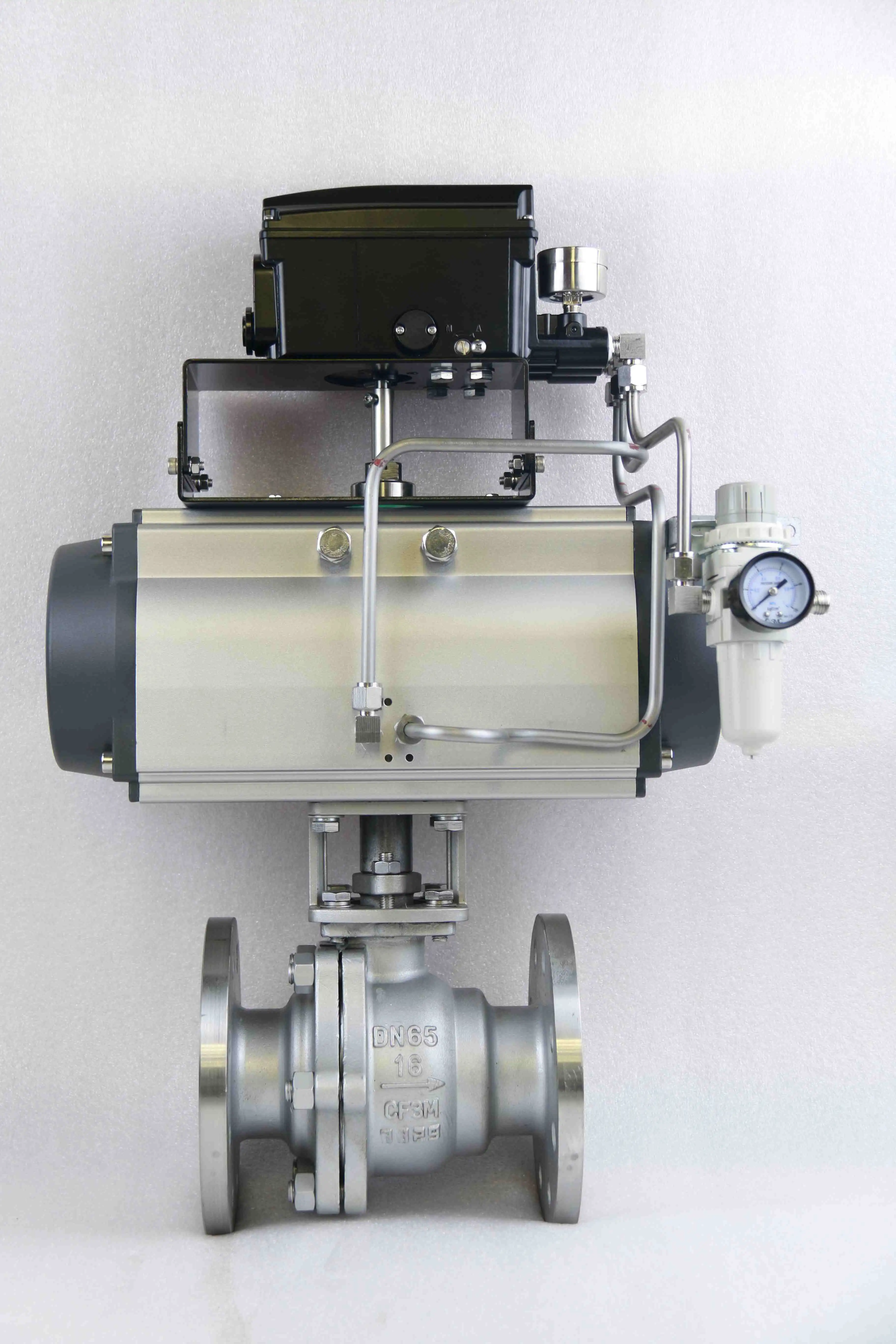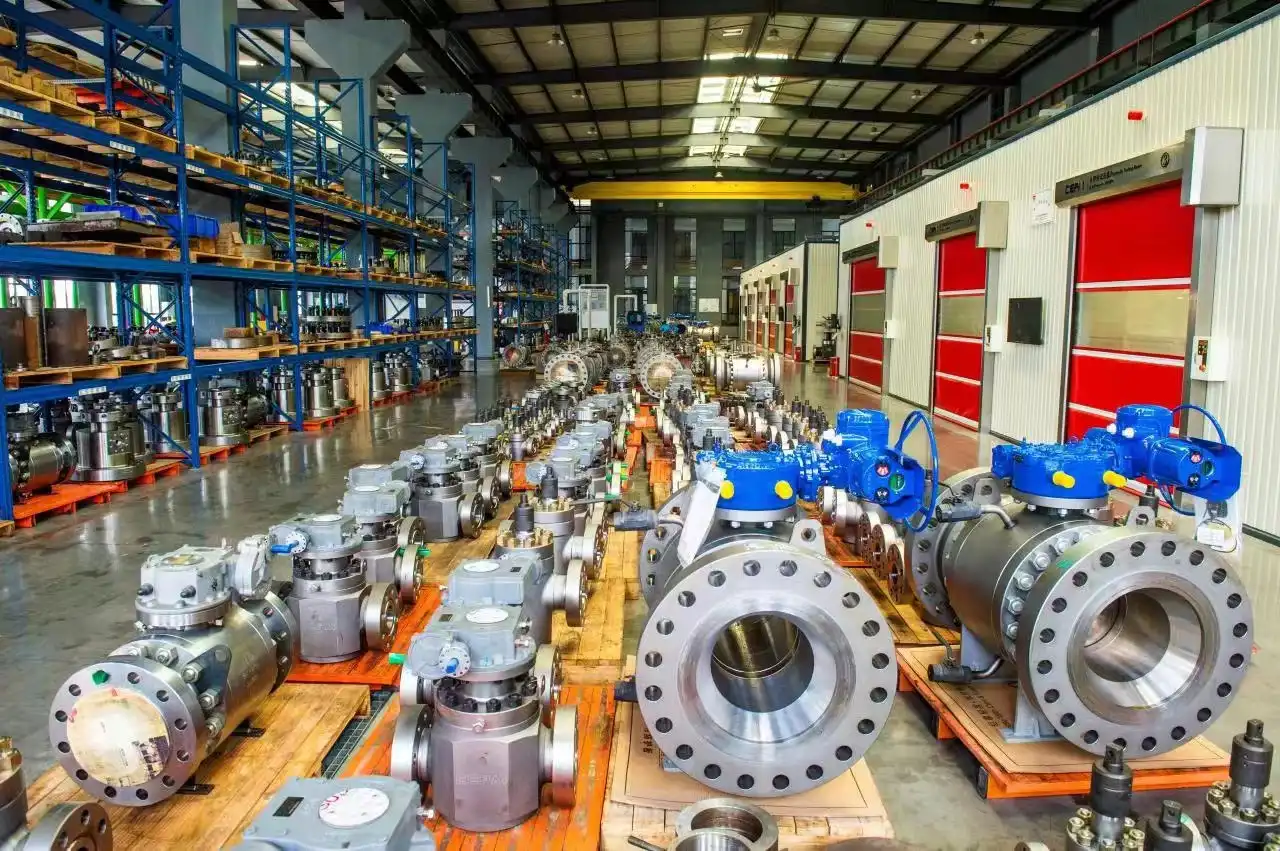How to Maintain Your Electric Ball Valve for Long-Term Use?
Electric ball valves have become indispensable components in modern industrial automation systems, particularly in oil and gas, petrochemical, and process control applications. Proper maintenance of these sophisticated devices is crucial for ensuring optimal performance, preventing costly downtime, and extending operational lifespan. Regular maintenance protects against unexpected failures and maintains system reliability. The Electric Ball Valve represents a critical intersection of mechanical precision and electrical control technology, requiring specialized knowledge and systematic maintenance approaches to achieve maximum efficiency and longevity in demanding industrial environments.

Essential Maintenance Fundamentals for Electric Ball Valve Systems
Regular Inspection and Monitoring Protocols
Professional inspection procedures should follow industry standards including AAR standards and include comprehensive visual inspection combined with functional testing. Electric Ball Valve systems require systematic evaluation of both mechanical and electrical components to identify potential issues before they escalate into costly failures. During inspections, technicians must examine the valve body for signs of corrosion, wear patterns, or structural damage that could compromise performance. The electrical actuator components demand particular attention, including wiring integrity, control signal responsiveness, and power consumption patterns. Temperature monitoring plays a vital role in early detection of operational anomalies, as excessive heat generation often indicates internal friction or electrical resistance issues. Vibration analysis can reveal bearing wear, misalignment, or internal component degradation that may not be visible during static inspections. Documentation of inspection findings creates valuable historical data for predictive maintenance planning and helps establish optimal maintenance intervals. Professional inspection protocols should include testing of emergency shutdown functions, position feedback accuracy, and response time measurements to ensure the Electric Ball Valve maintains its safety and performance specifications.
Cleaning and Contamination Prevention
Regular cleaning prevents dirt buildup and system flushing with proper filtration reduces maintenance frequency. Electric Ball Valve cleanliness directly impacts operational reliability and component longevity, making systematic cleaning protocols essential for long-term performance. Industrial environments often expose these valves to aggressive media, particulate contamination, and chemical residues that can accumulate and interfere with proper operation. Cleaning procedures must address both internal flow paths and external surfaces, using appropriate solvents and cleaning agents compatible with valve materials. The electrical components require specialized attention during cleaning operations to prevent moisture intrusion or damage to sensitive control circuits. Ultrasonic cleaning techniques can effectively remove stubborn deposits from internal components without disassembly, while maintaining the integrity of precision-machined surfaces. Environmental protection during cleaning operations ensures that cleaning agents and removed contaminants are properly contained and disposed of according to environmental regulations. Regular cleaning schedules should be adjusted based on operating conditions, with more frequent cleaning required in harsh environments or applications involving abrasive or corrosive media.
Lubrication and Sealing System Maintenance
Proper lubrication ensures smooth operation and prevents premature wear of moving components. Electric Ball Valve lubrication systems require careful attention to lubricant selection, application methods, and replacement intervals to maintain optimal performance. The choice of lubricants must consider operating temperature ranges, chemical compatibility with process media, and environmental conditions to prevent degradation or contamination issues. Sealing systems in Electric Ball Valve applications face unique challenges due to the combination of mechanical movement and electrical operation, requiring specialized sealing materials and maintenance techniques. Regular assessment of seal condition helps prevent both internal and external leakage, which can compromise process control and create safety hazards. Advanced synthetic lubricants often provide superior performance in extreme temperature or chemical exposure conditions compared to conventional mineral-based products. Automatic lubrication systems can provide consistent lubrication delivery while reducing maintenance labor requirements and ensuring optimal lubrication intervals. Proper storage and handling of lubricants prevents contamination and maintains their effectiveness throughout their service life.
Advanced Diagnostic and Preventive Maintenance Strategies
Predictive Maintenance Technologies and Implementation
Predictive maintenance using sensors and monitoring equipment enables proactive valve condition assessment. Modern Electric Ball Valve maintenance strategies increasingly rely on sophisticated diagnostic technologies that provide real-time insights into valve condition and performance trends. Vibration monitoring systems can detect bearing wear, misalignment, and other mechanical issues long before they result in failure, enabling planned maintenance during scheduled shutdowns rather than emergency repairs. Thermal imaging technology reveals hot spots that may indicate electrical problems, friction issues, or inadequate lubrication in Electric Ball Valve systems. Current signature analysis of the electrical actuator provides detailed information about motor condition, control circuit integrity, and mechanical loading conditions. Position feedback monitoring ensures accurate valve positioning and can detect developing issues with position sensors or mechanical linkages. Advanced diagnostic systems can integrate multiple sensor inputs to provide comprehensive valve health assessments and predictive failure analysis. Implementation of predictive maintenance programs requires careful planning, staff training, and integration with existing maintenance management systems to maximize effectiveness and return on investment.
Electrical System Optimization and Control Circuit Maintenance
Electric Ball Valve electrical systems demand specialized maintenance attention to ensure reliable operation and prevent control system failures. Power supply quality monitoring helps identify voltage fluctuations, harmonic distortion, or other electrical issues that can damage actuator components or compromise control accuracy. Control signal integrity verification ensures that position commands are accurately transmitted and executed, preventing process control deviations or safety system malfunctions. Regular calibration of position feedback systems maintains accurate valve positioning and enables precise process control in critical applications. Electrical connection inspection and maintenance prevents loose connections, corrosion, or insulation degradation that could lead to control failures or safety hazards. Emergency power system testing verifies that backup power supplies can maintain Electric Ball Valve operation during primary power failures. Software and firmware updates for digital control systems ensure compatibility with modern control platforms and access to the latest performance enhancements and security features. Electromagnetic interference testing and mitigation helps maintain reliable operation in electrically noisy industrial environments.
Performance Optimization and System Integration
Electric Ball Valve performance optimization requires understanding of both individual valve characteristics and overall system interactions to achieve maximum efficiency and reliability. Flow capacity verification ensures that valve sizing remains appropriate for current operating conditions and process requirements. Pressure drop analysis helps identify opportunities for energy savings and system efficiency improvements through optimal valve selection or operating procedures. Control loop tuning optimizes valve response characteristics to match process dynamics and minimize control system instability or oscillation. Integration with plant-wide asset management systems enables coordinated maintenance planning and resource optimization across multiple valve systems. Performance benchmarking against manufacturer specifications helps identify degradation trends and optimize replacement timing for maximum asset utilization. Advanced control strategies, such as partial stroke testing or adaptive control algorithms, can enhance Electric Ball Valve performance while providing additional diagnostic information for maintenance planning.
Troubleshooting Common Issues and Long-Term Reliability Enhancement
Systematic Problem Diagnosis and Resolution
Common issues include torque increases, leakage, and actuator failures that require systematic diagnosis. Electric Ball Valve troubleshooting requires methodical approaches that consider both mechanical and electrical failure modes to ensure accurate diagnosis and effective repairs. Torque monitoring during valve operation provides early warning of developing mechanical problems such as seat wear, ball damage, or stem binding that could lead to actuator overload or positioning errors. Leakage detection and analysis helps distinguish between seat leakage, stem packing issues, and body joint problems, enabling targeted repair strategies rather than comprehensive valve replacement. Electrical fault diagnosis involves testing of power supplies, control circuits, position feedback systems, and actuator motor systems to isolate specific failure points. Response time testing identifies developing issues with valve dynamics that may not be apparent during static testing but significantly impact process control performance. Systematic documentation of troubleshooting procedures and results creates valuable knowledge bases for future problem resolution and helps identify recurring issues that may indicate design or application problems requiring engineering solutions.
Advanced Materials and Technology Integration
Electric Ball Valve reliability enhancement often involves upgrading to advanced materials and technologies that provide superior performance compared to conventional designs. Ceramic ball and seat materials offer exceptional wear resistance and corrosion immunity in abrasive or chemically aggressive applications, significantly extending service life and reducing maintenance requirements. Advanced sealing technologies, including spring-loaded seals and specialized elastomers, provide improved sealing performance across wider temperature and pressure ranges. Smart actuator technologies enable remote monitoring, diagnostic capabilities, and predictive maintenance features that enhance reliability while reducing maintenance costs. Explosion-proof and intrinsically safe electrical designs ensure safe operation in hazardous environments while maintaining full functionality and control capabilities. Modular design concepts facilitate component replacement and upgrade without complete valve replacement, providing cost-effective performance enhancement options. Integration with industrial IoT platforms enables comprehensive data collection and analysis for continuous performance optimization and maintenance planning.

Quality Assurance and Compliance Standards
Industry regulations require regular valve inspections at specific intervals and compliance with ANSI, ASME, API and ISO standards. Electric Ball Valve maintenance programs must incorporate comprehensive quality assurance measures that ensure compliance with applicable industry standards and regulatory requirements. Documentation systems must track maintenance activities, test results, and component replacements to demonstrate compliance with safety regulations and quality management systems. Calibration programs for test equipment ensure accurate measurement and assessment of valve performance parameters throughout the maintenance lifecycle. Training programs for maintenance personnel ensure competency in specialized Electric Ball Valve technologies and safety procedures required for reliable maintenance execution. Supplier quality management systems ensure that replacement parts and consumables meet specifications and maintain valve performance and reliability standards. Continuous improvement processes analyze maintenance data to identify opportunities for enhanced procedures, extended maintenance intervals, or improved component designs that reduce total cost of ownership while maintaining or improving reliability.
Conclusion
Electric Ball Valve maintenance represents a critical investment in industrial system reliability and operational efficiency. Proper preventative maintenance ensures valves remain operable for years while reducing unexpected failure risks. The systematic approach to maintenance, combining regular inspections, predictive technologies, and professional expertise, creates sustainable value through enhanced performance and extended equipment life. Organizations that implement comprehensive maintenance strategies realize significant returns through reduced downtime, improved safety, and optimized operational costs.
CEPAI Group Co., Ltd. stands as China's premier Electric Ball Valve manufacturer, combining decades of engineering expertise with cutting-edge intelligent manufacturing capabilities. Our commitment to excellence, demonstrated through our extensive certifications including API, ISO, and CE standards, ensures that every Electric Ball Valve delivers exceptional performance and reliability. As a leading China Electric Ball Valve factory, we provide comprehensive solutions from initial design through long-term maintenance support. Our position as a trusted China Electric Ball Valve supplier enables us to serve diverse industrial sectors with customized solutions that meet the most demanding operational requirements.

Whether you're seeking a reliable China Electric Ball Valve manufacturer for new projects or exploring Electric Ball Valve for sale options to upgrade existing systems, CEPAI offers unmatched quality and service. Our competitive Electric Ball Valve price structure, combined with comprehensive technical support and China Electric Ball Valve wholesale programs, provides exceptional value for industrial customers worldwide. Contact our expert team at cepai@cepai.com to discuss your specific Electric Ball Valve requirements and discover how CEPAI's advanced manufacturing capabilities and technical expertise can enhance your operational success.
References
1. Johnson, M. R., & Chen, L. (2024). Industrial Valve Maintenance Strategies for Enhanced Operational Reliability. Journal of Process Control Engineering, 45(3), 234-251.
2. Thompson, K. A., Williams, R. P., & Davis, S. M. (2023). Electric Actuator Systems in Ball Valve Applications: Performance Optimization and Maintenance Best Practices. International Journal of Industrial Automation, 28(7), 445-462.
3. Anderson, P. J., & Liu, H. (2024). Predictive Maintenance Technologies for Critical Valve Systems in Oil and Gas Operations. Energy Processing Technology Review, 52(4), 178-195.
4. Rodriguez, C. E., Kumar, V., & Zhang, W. (2023). Advanced Materials and Design Innovations in High-Performance Ball Valve Systems. Materials Science and Engineering Applications, 67(12), 89-106.
_1746598568348.webp)
Get professional pre-sales technical consultation and valve selection services, customized solution services.

About CEPAI


